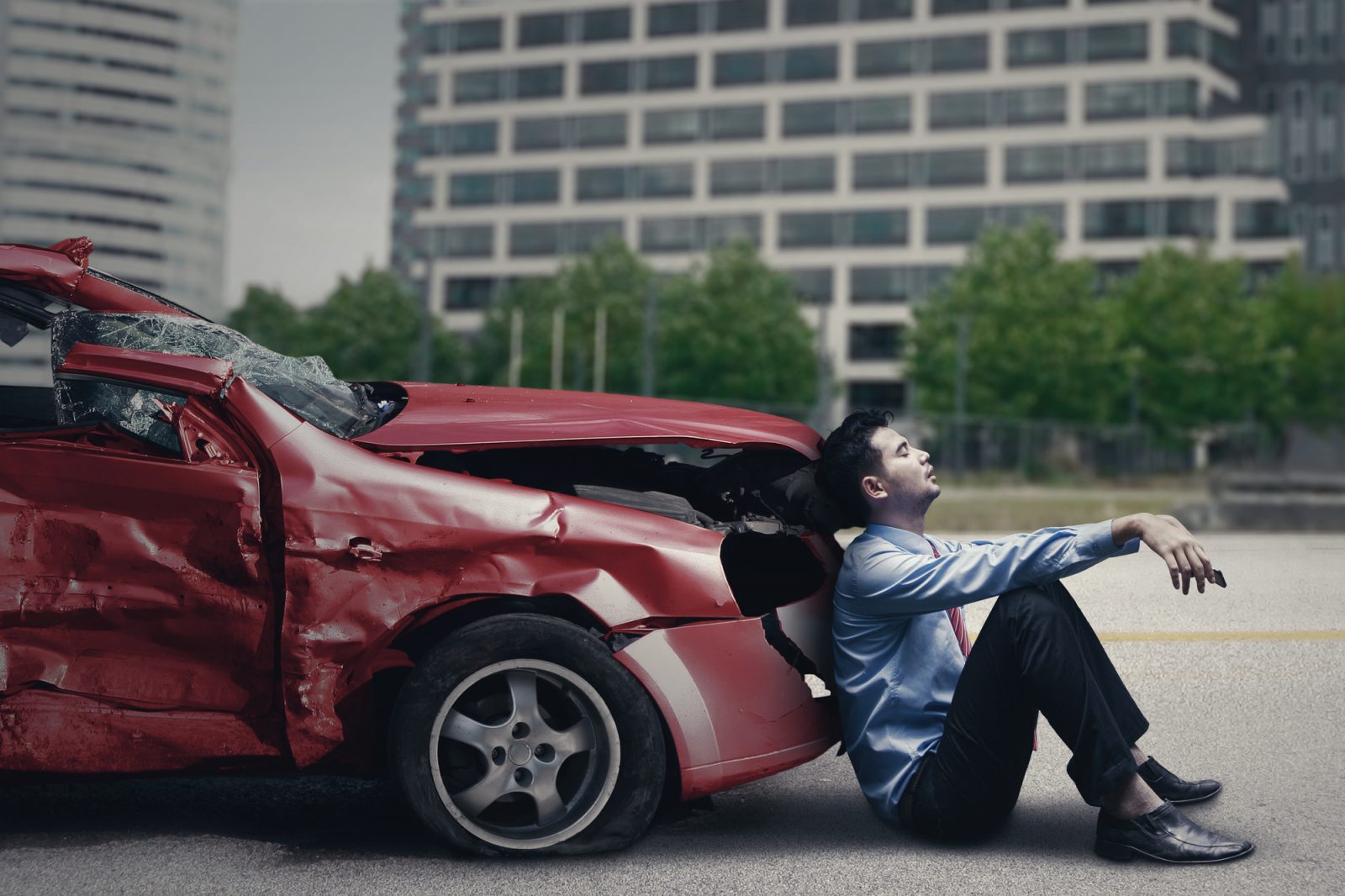Realistically speaking, car accidents happen even to the most cautious of drivers. From distracted driving to drunk driving and speeding, there are indeed many causes of vehicular collisions, many of them caused by other drivers. Despite your careful efforts to avoid this unfortunate fact of life, you may still get involved in an accident due someone else’s negligence.
When this happens, you’re expected to know the steps that should be taken as well as your legal rights, especially if you’re injured. To protect yourself and your interests, below are the things you should do after a major car accident:
1. Stay Calm and Check Your Injuries
The first thing you should do after getting involved in a car accident is to remain calm. While the post-accident process may be traumatic, it’s important that you stay calm so you can document what happened accurately and thoroughly. When you’re calm, you can think properly, which is necessary in this situation.
Moreover, after the accident, you should check whether you or anyone on the accident scene has been injured. If so, don’t hesitate to contact 911 for an ambulance. This is to make sure that all injured persons, including yourself, will be able to seek immediate medical attention. Whether the crash involved a minor or major impact, you can still suffer from a serious or permanent injury, including internal injuries that may not be immediately evident right after the accident. Hence, you should get yourself examined and treated right away to prevent further injuries from affecting your body or from worsening.
2. Contact the Police
Whether there are injuries involved or otherwise, it’s always a good idea to call the police for assistance. When there are police officers investigating the scene of the accident, they’ll make a detailed police report which outlines the events constituting the collision.
You may need a copy of the police report if you decide to file a claim with your insurance company. Along with other documents, providing a copy of the police report may expedite the claims process.
3. Exchange Essential Information with the Other Driver
After ensuring that you and any other person involved in the accident is uninjured or hasn’t sustained major injuries, the next thing you should do is to exchange essential information with the other driver involved in the collision. This is a crucial step because the information you gather can be used when you decide to file a claim against the other driver’s negligent behavior that caused the accident.
Below are the most important details you should exchange after an accident:
- Full name and contact information of the other driver
- Other driver’s insurance company and policy number
- Location of the accident
- Type, model, and color of the vehicle involved in the crash
- Driver’s license, including the license plate number
While this exchange of information with the other party is one of the things you should do after the accident, it’s still important to limit your discussion with them of what happened. Refrain from discussing fault by admitting or denying fault. You should only discuss about these matters to the authorized people such as the police, insurance representatives, and even your medical professionals. That way, anything you say will not be used against you by the other party.
4. Document the Accident
In addition to the exchange of essential information with the other driver, it’s also crucial to document the accident. This documentation can be used to prove the negligence on the part of the other driver and therefore, recover compensation from the at-fault party.
In order to protect your interests as the injured victim, here’s how you can document the accident:
- Take pictures – Don’t forget to take photos of the accident scene, including the vehicles, at different angles. Make sure the damages done to both cars involved are apparent in your photos, so it’ll be easy to support your claim against the other driver.
- Talk to the witness – If there were witnesses to the car accident, make sure to list down their names and their other personal information. Their sworn testimonies can also be used to support your claim that the other driver’s negligence caused your injuries.
Documenting the accident will increase your chances of getting appropriate compensation.
5. Contact and Hire a Lawyer
After preparing all the documentations, it’s time to call a car injury lawyer to help you determine the legal options you can take to seek compensation for your injuries. With them by your side, you’ll be able to protect your rights and make sure all pieces of evidence against the at-fault party aren’t destroyed. Your lawyer will advise you on issues such as what to do to make sure you get the justice you rightfully deserve. If you need legal representation, they’ll be there to help you.
However, finding the right lawyer to assist you can be a daunting task. With many options to choose from, you may find it difficult to hire the one who will work best for you. To help you with the hiring process, the following are the steps you can take:
- Do your research: Be sure to talk with more than one lawyer before choosing one to represent you. That way, you’ll be able to compare your options and find the perfect choice.
- Check the experience and reputation: Ask your prospects about how long they’ve been in the practice as well as the number of cases they’ve handled in the past. Check their winning record and find out if they’ve been disciplined for misconduct.
- Read online reviews: Visit review websites to get to know more about your prospects. Their previous clients may have left a review about their services. If your potential lawyer receives a lot of positive reviews, it can be a proof of how they work and serve their clients.
- Ask for references: If you can’t find anything online, you may request for some references to verify whether your prospective lawyer is the right one for you. Once you get the list, call them one by one and ask about how the lawyer handled their case.
These tips can help you find a local attorney who can help you with your case.
6. Inform the Insurer and Start the Claims Process
The next step to take after a major car accident is to notify the other party’s insurance company and start the claims process. However, filing an insurance claim can be very challenging. Typically, the other party’s insurance company will conduct an investigation on whether their client is at-fault. Since most insurance companies are in the business of making money, they may do some things to diminish or deny your claim, depending on the circumstances.
For example, they may force you to give a recorded statement which may be used against you. Because of this, working with a personal injury lawyer can be a good idea. Unless you’re an expert, you need their legal expertise to make sure the other insurance company will not violate your rights and interests. They’ll negotiate with the insurer to ensure you get the right amount of settlement you deserve.
7. File a Personal Injury Lawsuit
If your insurance claims process fails, despite diligent efforts, the next step to do is to file a personal injury lawsuit in court. Generally, a personal injury lawsuit refers to a legal dispute arising when one person suffers harm from an accident and someone else’s negligence is responsible for the harm.
Thus, if you’re filing a personal injury lawsuit, you should hire a lawyer to help you navigate the process. For example, there are court requirements and processes such as statutes of limitations that you should take note of in order to increase your chances of winning the case. In addition, a personal injury lawsuit has different stages that you should also keep in mind. These can include:
- Discovery: This stage is all about reviewing the evidence presented by both parties. Aside from the review, the lawyers representing each party will collect other pieces of evidence such as depositions, witness testimonies, and many more. For instance, you can use this evidence to discredit other party’s claim and get a judgment in your favor.
- Mediation: Before you step into the courtroom and elevate your case to trial, a mediator will bring you and the other party together to talk about how you can settle the issue without going to court. This process is called mediation, and this is your final chance to negotiate a settlement offer before the trial proceedings begin. In many cases, entering into a settlement may be a good idea because it guarantees you compensation without the stress of going through a trial.
- Trial: If a resolution can’t be made during the mediation process, then you and your lawyer will have to take the case to trial. At this stage, your lawyer will provide an opening statement, present the witness, conduct a cross-examination, and give their closing arguments. Thereafter, the jury will deliberate on the matter and issue a verdict. If the judgment provides that the other party’s negligence caused the accident, you’ll get compensated for all the harm done to you.
- Appeal: If the decision doesn’t favor you, you may appeal the same case to a higher court. At this stage, your lawyer will have to argue that the trial judge applied the law incorrectly. Just make sure that the one working on your appeal is a specialized lawyer who knows how to file and argue in this kind of proceeding.
The Bottom Line
Indeed, a major car accident that caused you or your loved one some injuries can affect your life in the long run. But by following the tips mentioned above, you can protect yourself and your family from unnecessary stress and worries.







